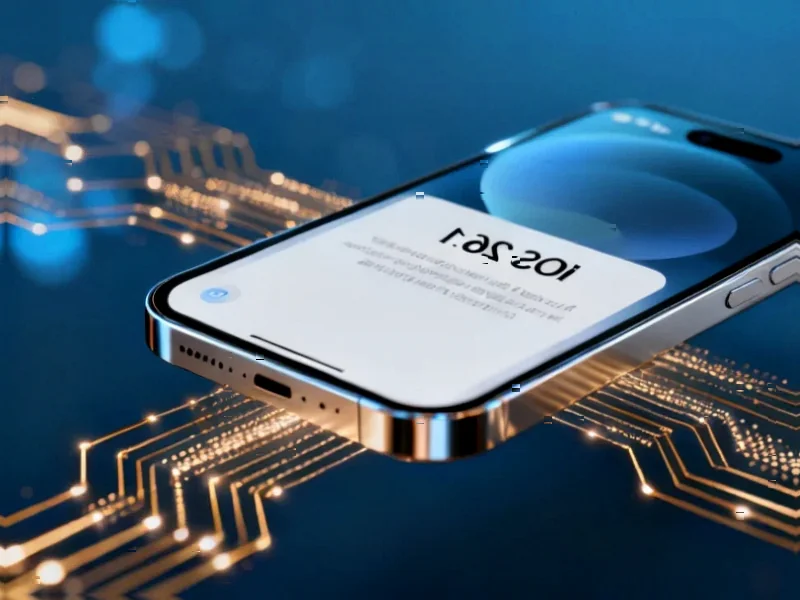According to Forbes, Apple has released iOS 26.1 with a new “Background Security Improvements” feature that enables silent security updates between major software releases. These lightweight patches target critical components like Safari, WebKit, and system libraries, allowing Apple to deploy security fixes immediately without requiring user intervention. The feature is enabled by default in Settings > Privacy & Security > Security Improvements, and Apple will maintain transparency by publishing details on their support site after each release. This represents a fundamental shift in how Apple approaches mobile security, moving from scheduled updates to continuous protection. Here’s why this matters beyond just security.
The Security Subscription Model
What Apple is implementing here is essentially a security-as-a-service model baked directly into their ecosystem. By making security updates silent and automatic, they’re creating a perpetual value proposition that strengthens customer retention. When security becomes something users don’t have to think about, it becomes harder to leave the ecosystem. This isn’t just about protecting users—it’s about protecting Apple’s recurring revenue streams from services like Apple Music, iCloud, and the App Store. The company’s security documentation shows they’re treating this as infrastructure, not just features.
Strategic Positioning Against Android
This move creates an unassailable competitive advantage against Android’s fragmented security model. While Google can patch its own code quickly, the real challenge has always been getting those patches to users through OEMs and carriers. Apple’s direct control over both hardware and software allows them to implement this seamless update system, making the “Android is less secure” narrative more compelling. The timing is strategic—as recent zero-day vulnerabilities have shown, the window between discovery and patching is where devices are most vulnerable.
The Enterprise Security Play
For corporate and government users, this changes the security calculus significantly. Organizations that previously had to delay updates for testing now get immediate protection for the most critical components while maintaining stability for major OS changes. This could accelerate iPhone adoption in regulated industries where security compliance is paramount. The ability to document continuous security improvements through published CVE details makes compliance reporting much simpler for IT departments.
The Financial Upside
Beyond the obvious security benefits, this strategy has clear financial implications. Reduced support costs from fewer security incidents, increased enterprise adoption, and stronger ecosystem lock-in all contribute to Apple’s bottom line. More importantly, it reinforces Apple’s premium positioning—when security becomes invisible yet always present, it justifies the iPhone’s price premium in a crowded market. This isn’t just a technical improvement; it’s a business model innovation disguised as a security feature.
The Coming Industry Shift
Expect Google and Samsung to scramble to match this capability, but they face significant technical and business model hurdles. Android’s open ecosystem means they can’t force OEMs to implement similar systems, creating a permanent competitive disadvantage. This move may eventually push the industry toward more subscription-based security models where continuous protection becomes a paid service—something Apple is perfectly positioned to monetize given their existing services infrastructure.




